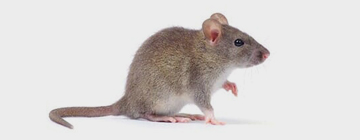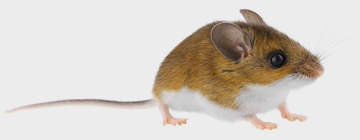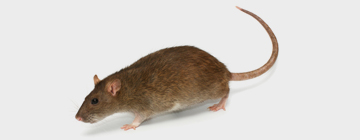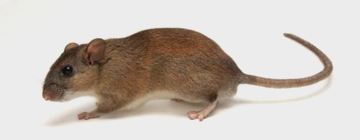INfomation about
Mice
A small
Intro about Mice
Mice can be difficult for residential and commercial properties to control in NYC & NJ. Having a professional pest control company that specializes in serving New York and New Jersey is essential to a long term Mice control solution that provides peace of mind.
House Mice
Mus musculus Linnaeus
Overview:
The house mouse is the most commonly encountered rodent in the U.S. It can adapt quickly to changing conditions and breeds rapidly. In fact, a female can give birth to a half dozen babies every three weeks, and can produce up to 35 young per year.
Habits:
House mice usually live in structures, but they can survive outdoors, too. They prefer to nest in dark, secluded areas and often build nests out of paper products, cotton, packing materials, wall insulation and fabrics. They are excellent climbers and can jump up to a foot high. House mice prefer to eat seeds and insects, but will eat many kinds of food.
Threats:
House mice are not only a nuisance; they can also cause serious property damage by chewing on materials. In fact, they have been known to spark electrical fires by gnawing on wires inside homes and behind walls. House mice can also eat and contaminate stored food, and are a vector of Salmonella, tapeworms, and the plague (via fleas), among other dangerous organisms.
Prevention:
- Seal cracks and holes on the outside of your home. Pay special attention to areas where utilities and pipes enter the home.
- Mice can hide in clutter, so keep areas clear and store boxes off of the floor.
- Keep food in sealed, rodent-proof containers.
- Regularly inspect your home for signs of mice, including droppings, gnaw marks and damaged food goods.
- If you suspect a rodent infestation, contact a licensed pest professional.
Did you know? House mice…
- cannot see clearly beyond six inches and are color blind. However, their other senses are very keen.
- can swim, but prefer not to.
- produce about 50 droppings a day, each.
- can fit through an opening as small as a dime.
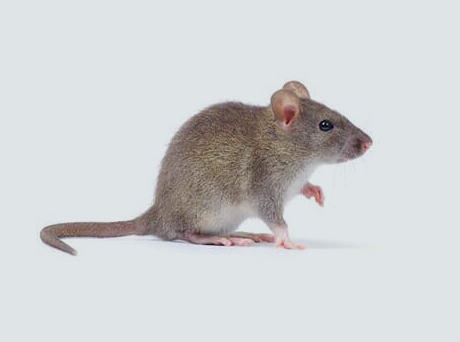

Color:
Dusty gray with a cream belly
Shape:
Round
Size:
2¹⁄2 – 33⁄₄ inches long
Region:
Found throughout the U.S. and the worldPackages For Mice Protection
Save Money Today
up to $75 OFF
If you are a new customer, enjoy $75.00 off your Home Pest Protection Premium plan.
Coupon Code: HomePre22

Call & Get Your Free Estimate
855-737-8765
Deer Mice
Peromyscus maniculatus
Overview:
Deer mice prefer rural, outdoor areas. They are rarely a problem in urban or residential areas, but can be a common pest in farming areas, summer/vacation homes, outbuildings, sheds and suburban homes near wooded areas.
Habits:
Deer mice often nest in old fence posts, tree hollows, log piles, abandoned bird nests and beneath decks. During winter months, they may invade homes, garages, sheds or rarely used vehicles to seek shelter. Inside, they can make their nest in storage boxes, stuffed furniture, drawers, wall voids and tight areas in basements or attics. Deer mice feed at dusk and dawn, preferring insects, seeds, nuts, berries and small fruits.
Threats:
Deer mice are a medical concern because they are the common carrier of Hantavirus. This virus is transmitted primarily by the inhalation of dust particles contaminated with the urine, feces or saliva of infected deer mice.
Prevention:
- Seal cracks and holes on the outside of your home to prevent mice from using easy entry ways. Pay special attention to areas where utilities and pipes enter the home. Replace loose mortar and weather stripping around the basement foundation and windows.
- Keep shrubs and tree branches cut back from the house.
- Mice can hide in clutter, so keep areas clear, and store boxes off of the floor.
- Don’t store pet food or bird seed in garages or storage sheds, where it is especially attractive to deer mice.
- Regularly inspect basements, attics, outbuildings and rarely used cars/RVs for signs of an infestation.
- If you suspect an infeestation, contact a licensed pest professional.
Did you know? Deer mice…
- always have a bicolored tail, usually half brown, half white.
- are nocturnal.
- are excellent climbers
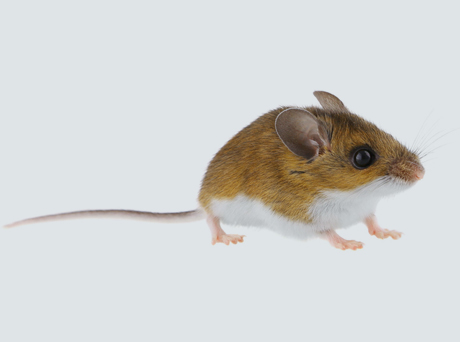

Color:
Brown with light feet and underbelly
Shape:
Round
Size:
23⁄₄ – 4 inches long
Region:
Found throughout the U.SCall & Get Your Free Estimate
855-737-8765 or
Norway Rats
Rattus norvegicus (Berkenhout)
Overview:
Norway rats can cause damage to property and structures through their gnawing. They are also a vector of diseases and can contaminate food. Believed to be of Asian origin, Norway rats are now found throughout the world.
Habits:
Norway rats are primarily nocturnal. Outdoors, they burrow in soil near stream/river banks, piles of garbage or under concrete slabs. Norway rats are social and often build burrows close to one another. Indoors, they often nest in basements, piles of debris or undisturbed materials. They are known to gnaw through almost anything – including plastic or lead pipes – to obtain food or water
Threats:
Norway rats can cause damage to structures and personal property through their gnawing and eating. They can also spread diseases including plague, jaundice, rat-bite fever, cowpox virus, trichinosis and salmonellosis. In addition, these rats can introduce fleas and mites into a home.
Prevention:
- Eliminate sources of moisture, especially in crawl spaces and basements.
- Fill any gaps or cracks on the outside of your home with silicone caulk.
- Store food in tightly sealed containers.
- Keep kitchens tidy by sweeping crumbs off of floors and wiping counters.
- Remove clutter to reduce nesting spots.
- Inspect your home for signs of an infestation, including rodent droppings, gnaw marks and damaged goods. Look for greasy rub marks caused by their oily fur.
- If you suspect an infestation, contact a licensed pest professional.
Did you know? Norway Rats
- tend to follow the same pathway from their nest to food and water.
- can gain entrance to a structure through any opening larger than ½ inch.
- usually have an “emergency exit” built into their burrows.
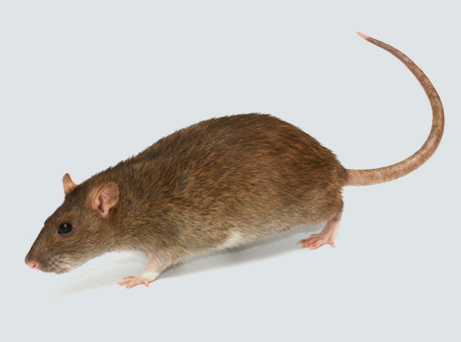

Color:
Brown with scattered black hairs; gray to white underside
Shape:
Long, heavily-bodied, blunt muzzle, small ears and eyes
Size:
7 – 9¹⁄2 inches long
Region:
Found throughout the U.SCall & Get Your Free Estimate
855-737-8765 or
Roof Rats
Rattus rattus Linnaeus
Overview:
The roof rat – also called the black rat or ship rat – is smaller than the Norway rat but causes similar issues, including gnawing through materials, carrying diseases and contaminating food. The roof rat is thought to be of southeast Asian origin, but is now found throughout the world, especially in tropical regions.
Habits:
Roof rats are primarily nocturnal. They live in colonies and prefer to nest in upper parts of structures or in trees. They forage for food in groups of up to ten and tend to return to the same food source time after time. Roof rats follow the same pathway between their nest and food. Their runways will be free of debris and may also have dark rub marks where their fur makes contact.
Threats:
Historically, roof rats and their fleas have been associated with bubonic plague. Though transmission is rare today, there are still a handful of cases in the U.S. each year. Roof rats can also spread typhus, jaundice, rat-bite fever, trichinosis and salmonellosis. They can also carry fleas and mites.
Prevention:
- Fill any gaps or cracks on the outside of your home with silicone caulk. Roof rats can fit through openings as small as ½ inch, or the size of a quarter.
- Keep trees and shrubs trimmed away from the building and cut back limbs overhanging the roof.
- Clean up fruit that may fall from trees in the yard.
- Keep garbage in tightly covered receptacles.
- Regularly inspect your home and property for signs of an infestation, including rodent droppings, gnaw marks and damaged goods. Look for greasy rub marks caused by their oily fur.
- If you suspect a roof rat infestation, contact a licensed pest professional
Did you know? Roof rats…
- are good swimmers.
- are cautious and shy away from new objects and changes.
- and other rats’ teeth continually grow. They gnaw to help file
down their teeth.
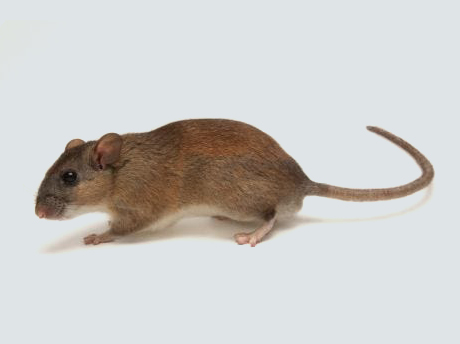

Color:
Brown with black intermixed;gray, white or black underside
Shape:
Long and thin with scaly tail; large ears and eyes
Size:
6 – 8 inches not including the tail


